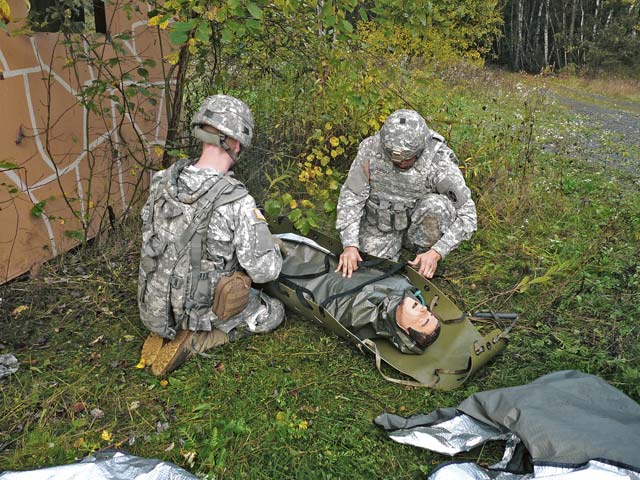
Medics play a vital role on today’s battlefield, treating the injured before their delivery to better equipped medical facilities. But have you ever wondered what happens to an injured Soldier if a medic isn’t available immediately? Soldiers with the 10th Army Air and Missile Defense Command, through recent combat lifesaver training, are now better able to provide initial medical care to the injured before any medic appears.
U.S. Army Sgt. Stephen Walkosz, battalion senior line medic, 5th Battalion 7th Air Defense Artillery Regiment, 10th Army Air and Missile Defense Command, served as an instructor for the most recent CLS class held at Rhine Ordnance Barracks, Oct. 15 to 18. It’s a class that Walkosz usually teaches at least once, and sometimes twice monthly.
“The main duty of a CLS-trained Soldier is to assist the medics, which usually means acting as a first responder,” Walkosz said.
U.S. Army Europe has set a requirement for one CLS bag and one CLS-trained Soldier to be assigned to each combat vehicle. The bag includes items needed to treat battlefield casualties, such as bandages, tourniquets, needles, etc. Additionally, refresher training must be completed annually for Soldiers to maintain their CLS status.
Three days of classroom instruction preceded a final day of field exercises, where Soldiers took part in tactical scenarios designed by Walkosz and his medical team. Amidst pumped-in noise, mud, woods and close-quarters, Soldiers were evaluated on subjects like casualty care, opening and managing a casualty’s airway, completing a combat casualty care card, controlling bleeding, treating chest injuries and requesting medical evacuation for the injured.
“We expect them to get flustered,” said Walkosz, who did his part during the scenarios to get Soldiers to think about all aspects of the mission, not just the immediate tasks before them.
For U.S. Army Sgt. Ronin Shehu, a Patriot missile engagement controller with Headquarters and Headquarters Battery, 10th AAMDC, the chance to attend the CLS class is something he feels other Soldiers should do when given the opportunity.
“CLS Soldiers may not have the experience of medics, but it’s still a crucial skill that’s often overlooked,” Shehu said.
Shehu found the chest decompression, tourniquets, airway management and breathing control areas of instruction the most valuable, but was especially grateful for the chance to put it all together in a fast-paced field environment.
Walkosz agreed, noting that classroom learning can never duplicate the sights, sounds and rush of adrenaline that Soldiers will experience in a real tactical situation
“We want to see that when under stress, they still meet the standard,” he said.







